-
EXECUTIVE SUMMARY
-
MARKET INTRODUCTION
-
Definition
-
Scope of the Study
- Research Objective
- Assumptions
- Limitations
-
RESEARCH METHODOLOGY
-
Overview
-
Data Mining
-
Secondary Research
-
Primary Research
- Primary Interviews
- Breakdown of Primary Respondents
-
and Information Gathering Process
-
Forecasting Modality
-
Market Size Estimation
- Bottom-Up Approach
- Top-Down Approach
-
Data Triangulation
-
Validation
-
MARKET DYNAMICS
-
Overview
-
Drivers
-
Restraints
-
Opportunities
-
MARKET FACTOR ANALYSIS
-
Value Chain Analysis
-
Porter’s Five Forces Analysis
- Bargaining Power
- Threat of New Entrants
- Threat of Substitutes
- Intensity of Rivalry
-
of Suppliers
-
5.2.2.
-
Bargaining Power of Buyers
-
COVID-19 Impact Analysis
- Market Impact Analysis
- Regional Impact
- Opportunity and
-
Threat Analysis
-
6.
-
GLOBAL PREDICTIVE DISEASE ANALYTICS MARKET, BY COMPONENT
-
Overview
-
Software & Services
-
Hardware
-
GLOBAL PREDICTIVE DISEASE ANALYTICS MARKET, BY
-
DEPLOYMENT
-
7.1.
-
Overview
-
7.2.
-
On-premise
-
7.3.
-
Cloud-based
-
8.
-
GLOBAL PREDICTIVE DISEASE ANALYTICS MARKET, BY END USER
-
Overview
-
Healthcare Payers
-
Healthcare Providers
-
Other End Users
-
GLOBAL PREDICTIVE DISEASE ANALYTICS MARKET, BY
-
REGION
-
9.1.
-
Overview
-
9.2.
-
North America
-
9.2.1.
-
U.S.
-
9.2.2.
-
Canada
-
9.3.
-
Europe
-
9.3.1.
-
Germany
-
9.3.2.
-
France
-
9.3.3.
-
U.K
-
9.3.4.
-
Italy
-
9.3.5.
-
Spain
-
9.3.6.
-
Rest of Europe
-
9.4.
-
Asia-Pacific
-
9.4.1.
-
China
-
9.4.2.
-
India
-
9.4.3.
-
Japan
-
9.4.4.
-
South Korea
-
9.4.5.
-
Australia
-
9.4.6.
-
Rest of Asia-Pacific
-
9.5.
-
Rest of the World
-
9.5.1.
-
Middle East
-
9.5.2.
-
Africa
-
9.5.3.
-
Latin America
-
10.
-
COMPETITIVE LANDSCAPE
-
10.1.
-
Overview
-
10.2.
-
Competitive Analysis
-
10.3.
-
Market Share Analysis
-
10.4.
-
Major Growth Strategy in the Global Predictive disease analytics Market,
-
Competitive Benchmarking
-
Leading Players
-
in Terms of Number of Developments in the Global Predictive disease analytics Market,
-
Key developments
- Merger & Acquisitions
- Joint Ventures
-
and Growth Strategies
-
10.7.1.
-
New Component Launch/Deployment Deployment
-
Major Players Financial
- Major Players R&D Expenditure. 2022
-
Matrix
-
10.8.1.
-
Sales & Operating Income, 2022
-
COMPANY PROFILES
-
Oracle
- Company Overview
- Financial Overview
- Components Offered
- Key Developments
- SWOT Analysis
- Key Strategies
-
IBM
- Company Overview
- Financial Overview
- Components Offered
- Key Developments
- SWOT Analysis
- Key Strategies
-
SAS
- Company Overview
- Financial Overview
- Components Offered
- Key Developments
- SWOT Analysis
- Key Strategies
-
Allscripts Healthcare
-
Solutions Inc.
-
11.4.1.
-
Company Overview
-
11.4.2.
-
Financial Overview
-
11.4.3.
-
Components Offered
-
11.4.4.
-
Key Developments
-
11.4.5.
-
SWOT Analysis
-
11.4.6.
-
Key Strategies
-
11.5.
-
MedeAnalytics, Inc.
-
11.5.1.
-
Company Overview
-
11.5.2.
-
Financial Overview
-
11.5.3.
-
Components Offered
-
11.5.4.
-
Key Developments
-
11.5.5.
-
SWOT Analysis
-
11.5.6.
-
Key Strategies
-
11.6.
-
HEALTH CATALYST.
-
11.6.1.
-
Company Overview
-
11.6.2.
-
Financial Overview
-
11.6.3.
-
Components Offered
-
11.6.4.
-
Key Developments
-
11.6.5.
-
SWOT Analysis
-
11.6.6.
-
Key Strategies
-
11.7.
-
Apixio Inc.
-
11.7.1.
-
Company Overview
-
11.7.2.
-
Financial Overview
-
11.7.3.
-
Components Offered
-
11.7.4.
-
Key Developments
-
11.7.5.
-
SWOT Analysis
-
11.7.6.
-
Key Strategies
-
12.
-
APPENDIX
-
12.1.
-
References
-
12.2.
-
Related Reports
-
-
LIST OF TABLES
-
GLOBAL PREDICTIVE
-
DISEASE ANALYTICS MARKET, SYNOPSIS, 2018-2032
-
GLOBAL PREDICTIVE DISEASE ANALYTICS MARKET,
-
ESTIMATES & FORECAST, 2018-2032 (USD BILLION)
-
GLOBAL PREDICTIVE DISEASE ANALYTICS MARKET,
-
BY COMPONENT, 2018-2032 (USD BILLION)
-
GLOBAL PREDICTIVE DISEASE ANALYTICS MARKET, BY DEPLOYMENT,
-
GLOBAL PREDICTIVE DISEASE ANALYTICS MARKET, BY END USER, 2018-2032
-
(USD BILLION)
-
TABLE
-
NORTH AMERICA PREDICTIVE DISEASE ANALYTICS MARKET, BY COMPONENT, 2018-2032 (USD
-
BILLION)
-
TABLE
-
NORTH AMERICA PREDICTIVE DISEASE ANALYTICS MARKET, BY DEPLOYMENT, 2018-2032 (USD
-
BILLION)
-
TABLE
-
NORTH AMERICA PREDICTIVE DISEASE ANALYTICS MARKET, BY END USER, 2018-2032 (USD
-
BILLION)
-
TABLE
-
NORTH AMERICA PREDICTIVE DISEASE ANALYTICS MARKET, BY COUNTRY, 2018-2032 (USD
-
BILLION)
-
TABLE
-
U.S. PREDICTIVE DISEASE ANALYTICS MARKET, BY COMPONENT, 2018-2032 (USD BILLION)
-
U.S. PREDICTIVE
-
DISEASE ANALYTICS MARKET, BY DEPLOYMENT, 2018-2032 (USD BILLION)
-
U.S. PREDICTIVE DISEASE
-
ANALYTICS MARKET, BY END USER, 2018-2032 (USD BILLION)
-
CANADA PREDICTIVE DISEASE ANALYTICS MARKET,
-
BY COMPONENT, 2018-2032 (USD BILLION)
-
CANADA PREDICTIVE DISEASE ANALYTICS MARKET, BY
-
DEPLOYMENT, 2018-2032 (USD BILLION)
-
CANADA PREDICTIVE DISEASE ANALYTICS MARKET, BY
-
END USER, 2018-2032 (USD BILLION)
-
EUROPE PREDICTIVE DISEASE ANALYTICS MARKET, BY COMPONENT,
-
EUROPE PREDICTIVE DISEASE ANALYTICS MARKET, BY DEPLOYMENT,
-
EUROPE PREDICTIVE DISEASE ANALYTICS MARKET, BY END USER, 2018-2032
-
(USD BILLION)
-
TABLE
-
EUROPE PREDICTIVE DISEASE ANALYTICS MARKET, BY COUNTRY, 2018-2032 (USD BILLION)
-
GERMANY PREDICTIVE
-
DISEASE ANALYTICS MARKET, BY COMPONENT, 2018-2032 (USD BILLION)
-
GERMANY PREDICTIVE DISEASE
-
ANALYTICS MARKET, BY DEPLOYMENT, 2018-2032 (USD BILLION)
-
GERMANY PREDICTIVE DISEASE ANALYTICS MARKET,
-
BY END USER, 2018-2032 (USD BILLION)
-
FRANCE PREDICTIVE DISEASE ANALYTICS MARKET, BY
-
COMPONENT, 2018-2032 (USD BILLION)
-
FRANCE PREDICTIVE DISEASE ANALYTICS MARKET, BY
-
DEPLOYMENT, 2018-2032 (USD BILLION)
-
FRANCE PREDICTIVE DISEASE ANALYTICS MARKET, BY
-
END USER, 2018-2032 (USD BILLION)
-
ITALY PREDICTIVE DISEASE ANALYTICS MARKET, BY COMPONENT, 2018-2032
-
(USD BILLION)
-
TABLE
-
ITALY PREDICTIVE DISEASE ANALYTICS MARKET, BY DEPLOYMENT, 2018-2032 (USD BILLION)
-
ITALY PREDICTIVE
-
DISEASE ANALYTICS MARKET, BY END USER, 2018-2032 (USD BILLION)
-
SPAIN PREDICTIVE DISEASE
-
ANALYTICS MARKET, BY COMPONENT, 2018-2032 (USD BILLION)
-
SPAIN PREDICTIVE DISEASE ANALYTICS MARKET,
-
BY DEPLOYMENT, 2018-2032 (USD BILLION)
-
SPAIN PREDICTIVE DISEASE ANALYTICS MARKET, BY END
-
USER, 2018-2032 (USD BILLION)
-
U.K PREDICTIVE DISEASE ANALYTICS MARKET, BY COMPONENT, 2018-2032
-
(USD BILLION)
-
TABLE
-
U.K PREDICTIVE DISEASE ANALYTICS MARKET, BY DEPLOYMENT, 2018-2032 (USD BILLION)
-
U.K PREDICTIVE
-
DISEASE ANALYTICS MARKET, BY END USER, 2018-2032 (USD BILLION)
-
REST OF EUROPE PREDICTIVE
-
DISEASE ANALYTICS MARKET, BY COMPONENT, 2018-2032 (USD BILLION)
-
REST OF EUROPE PREDICTIVE
-
DISEASE ANALYTICS MARKET, BY DEPLOYMENT, 2018-2032 (USD BILLION)
-
REST OF EUROPE PREDICTIVE
-
DISEASE ANALYTICS MARKET, BY END USER, 2018-2032 (USD BILLION)
-
ASIA PACIFIC PREDICTIVE
-
DISEASE ANALYTICS MARKET, BY COMPONENT, 2018-2032 (USD BILLION)
-
ASIA PACIFIC PREDICTIVE
-
DISEASE ANALYTICS MARKET, BY DEPLOYMENT, 2018-2032 (USD BILLION)
-
ASIA PACIFIC PREDICTIVE
-
DISEASE ANALYTICS MARKET, BY END USER, 2018-2032 (USD BILLION)
-
ASIA PACIFIC PREDICTIVE
-
DISEASE ANALYTICS MARKET, BY COUNTRY, 2018-2032 (USD BILLION)
-
JAPAN PREDICTIVE DISEASE
-
ANALYTICS MARKET, BY COMPONENT, 2018-2032 (USD BILLION)
-
JAPAN PREDICTIVE DISEASE ANALYTICS MARKET,
-
BY DEPLOYMENT, 2018-2032 (USD BILLION)
-
JAPAN PREDICTIVE DISEASE ANALYTICS MARKET, BY END
-
USER, 2018-2032 (USD BILLION)
-
CHINA PREDICTIVE DISEASE ANALYTICS MARKET, BY COMPONENT, 2018-2032
-
(USD BILLION)
-
TABLE
-
CHINA PREDICTIVE DISEASE ANALYTICS MARKET, BY DEPLOYMENT, 2018-2032 (USD BILLION)
-
CHINA PREDICTIVE
-
DISEASE ANALYTICS MARKET, BY END USER, 2018-2032 (USD BILLION)
-
INDIA PREDICTIVE DISEASE
-
ANALYTICS MARKET, BY COMPONENT, 2018-2032 (USD BILLION)
-
INDIA PREDICTIVE DISEASE ANALYTICS MARKET,
-
BY DEPLOYMENT, 2018-2032 (USD BILLION)
-
INDIA PREDICTIVE DISEASE ANALYTICS MARKET, BY END
-
USER, 2018-2032 (USD BILLION)
-
AUSTRALIA PREDICTIVE DISEASE ANALYTICS MARKET, BY COMPONENT,
-
AUSTRALIA PREDICTIVE DISEASE ANALYTICS MARKET, BY DEPLOYMENT,
-
AUSTRALIA PREDICTIVE DISEASE ANALYTICS MARKET, BY END USER,
-
SOUTH KOREA PREDICTIVE DISEASE ANALYTICS MARKET, BY COMPONENT,
-
SOUTH KOREA PREDICTIVE DISEASE ANALYTICS MARKET, BY DEPLOYMENT,
-
SOUTH KOREA PREDICTIVE DISEASE ANALYTICS MARKET, BY END USER,
-
REST OF ASIA-PACIFIC PREDICTIVE DISEASE ANALYTICS MARKET,
-
BY COMPONENT, 2018-2032 (USD BILLION)
-
REST OF ASIA-PACIFIC PREDICTIVE DISEASE ANALYTICS
-
MARKET, BY DEPLOYMENT, 2018-2032 (USD BILLION)
-
REST OF ASIA-PACIFIC PREDICTIVE DISEASE
-
ANALYTICS MARKET, BY END USER, 2018-2032 (USD BILLION)
-
REST OF WORLD PREDICTIVE DISEASE ANALYTICS
-
MARKET, BY COMPONENT, 2018-2032 (USD BILLION)
-
REST OF WORLD PREDICTIVE DISEASE ANALYTICS
-
MARKET, BY DEPLOYMENT, 2018-2032 (USD BILLION)
-
REST OF WORLD PREDICTIVE DISEASE ANALYTICS
-
MARKET, BY END USER, 2018-2032 (USD BILLION)
-
REST OF WORLD PREDICTIVE DISEASE ANALYTICS
-
MARKET, BY COUNTRY, 2018-2032 (USD BILLION)
-
MIDDLE EAST PREDICTIVE DISEASE ANALYTICS
-
MARKET, BY COMPONENT, 2018-2032 (USD BILLION)
-
MIDDLE EAST PREDICTIVE DISEASE ANALYTICS
-
MARKET, BY DEPLOYMENT, 2018-2032 (USD BILLION)
-
MIDDLE EAST PREDICTIVE DISEASE ANALYTICS
-
MARKET, BY END USER, 2018-2032 (USD BILLION)
-
AFRICA PREDICTIVE DISEASE ANALYTICS MARKET,
-
BY COMPONENT, 2018-2032 (USD BILLION)
-
AFRICA PREDICTIVE DISEASE ANALYTICS MARKET, BY
-
DEPLOYMENT, 2018-2032 (USD BILLION)
-
AFRICA PREDICTIVE DISEASE ANALYTICS MARKET, BY
-
END USER, 2018-2032 (USD BILLION)
-
LATIN AMERICA PREDICTIVE DISEASE ANALYTICS MARKET, BY COMPONENT,
-
LATIN AMERICA PREDICTIVE DISEASE ANALYTICS MARKET, BY DEPLOYMENT,
-
LATIN AMERICA PREDICTIVE DISEASE ANALYTICS MARKET, BY END
-
USER, 2018-2032 (USD BILLION)
-
LIST OF FIGURES
-
RESEARCH PROCESS
-
MARKET STRUCTURE FOR THE GLOBAL PREDICTIVE
-
DISEASE ANALYTICS MARKET
-
MARKET DYNAMICS FOR THE GLOBAL PREDICTIVE DISEASE ANALYTICS
-
MARKET
-
FIGURE
-
GLOBAL PREDICTIVE DISEASE ANALYTICS MARKET, SHARE (%), BY COMPONENT, 2022
-
GLOBAL PREDICTIVE
-
DISEASE ANALYTICS MARKET, SHARE (%), BY DEPLOYMENT, 2022
-
GLOBAL PREDICTIVE DISEASE ANALYTICS MARKET,
-
SHARE (%), BY END USER, 2022
-
GLOBAL PREDICTIVE DISEASE ANALYTICS MARKET, SHARE (%), BY
-
REGION, 2022
-
FIGURE
-
NORTH AMERICA: PREDICTIVE DISEASE ANALYTICS MARKET, SHARE (%), BY REGION, 2022
-
EUROPE: PREDICTIVE
-
DISEASE ANALYTICS MARKET, SHARE (%), BY REGION, 2022
-
ASIA-PACIFIC: PREDICTIVE DISEASE ANALYTICS
-
MARKET, SHARE (%), BY REGION, 2022
-
REST OF THE WORLD: PREDICTIVE DISEASE ANALYTICS
-
MARKET, SHARE (%), BY REGION, 2022
-
GLOBAL PREDICTIVE DISEASE ANALYTICS MARKET: COMPANY
-
SHARE ANALYSIS, 2022 (%)
-
ORACLE: FINANCIAL OVERVIEW SNAPSHOT
-
ORACLE: SWOT ANALYSIS
-
IBM: FINANCIAL OVERVIEW
-
SNAPSHOT
-
FIGURE
-
IBM: SWOT ANALYSIS
-
FIGURE
-
SAS: FINANCIAL OVERVIEW SNAPSHOT
-
SAS: SWOT ANALYSIS
-
ALLSCRIPTS HEALTHCARE SOLUTIONS INC.: FINANCIAL
-
OVERVIEW SNAPSHOT
-
FIGURE
-
ALLSCRIPTS HEALTHCARE SOLUTIONS INC.: SWOT ANALYSIS
-
MEDEANALYTICS, INC..: FINANCIAL OVERVIEW
-
SNAPSHOT
-
FIGURE
-
MEDEANALYTICS, INC..: SWOT ANALYSIS
-
HEALTH CATALYST.: FINANCIAL OVERVIEW SNAPSHOT
-
HEALTH CATALYST.:
-
SWOT ANALYSIS
-
FIGURE
-
APIXIO INC.: FINANCIAL OVERVIEW SNAPSHOT
-
APIXIO INC.: SWOT ANALYSIS

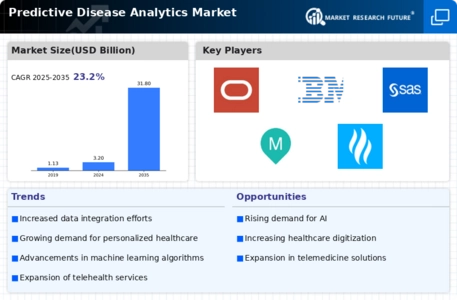
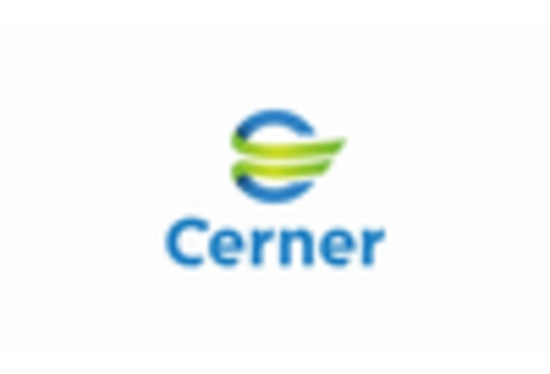
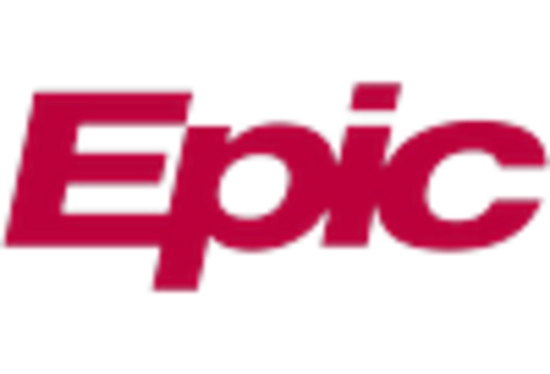

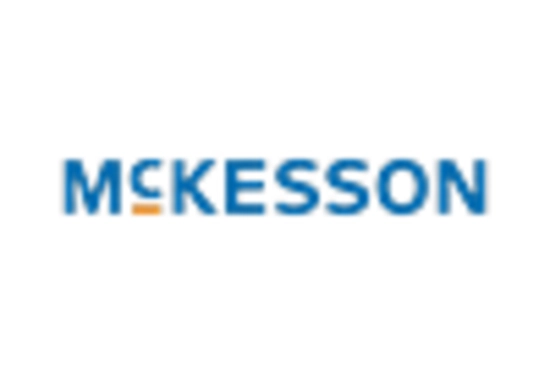

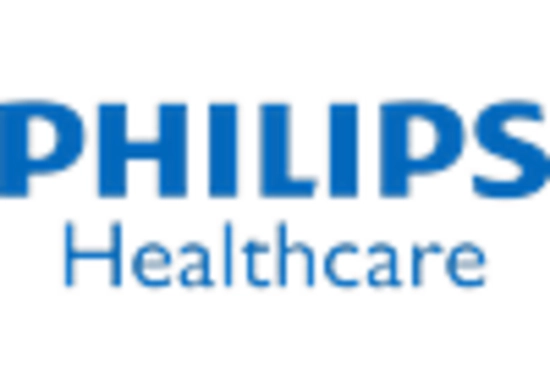

Leave a Comment